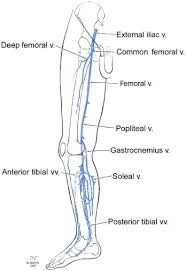
Can Britain retain ownership of its former imperial oil company – BP
Order Instructions:
Clear demonstration of rigorous research from recognised authoritative sources. Audience focus. Meeting the deliverables. 50% Rigorous use of the Harvard Methodology for citation and referencing; page numbering; correct display of direct quotations. 10 % Demonstration of a clear understanding of the issues. Use of academic models. Full articulation of ideas developed. Offering well-argued solutions and/or alternatives. 40% Assignment Task Can Britain retain ownership of its former imperial oil company – BP? BP was a member of the “Seven Sisters” collective of international oil companies in the 1970s, rubbing shoulders with Exxon and Shell as one of the top 3 oil giants of that era. Since then, it has encountered several troubles, not least of which was its involvement with the Texas City refinery fire and the Deepwater Horizon disaster in the Gulf of Mexico in 2010. The cost of the Gulf of Mexico debacle, at $43 billion and still counting, in fines, legal costs and clean-up has seen enter into asset sales of some $40 billion to help finance these gigantic bills. Whilst doggedly maintaining its generous shareholder dividends, on which many private and institutional portfolios rely on both sides of the Atlantic, BP shares have fallen by one-fifth in the past 10 years. This contrasts significantly with broader stock market indices which show growth of some 20% in the same period. Shareholders have become nervous, not only because the dividend returns are slightly negative, even if the yield remains good and attractive, but that BP is rapidly becoming a potential take-over target. Stock market capitalisation is still large at $107 billion, but in April 2010 BP’s market capitalisation was at a high of $190 billion. BP still has some strengths – its expertise in deep-water drilling and a 20% stake in Rosneft, Russia’s biggest oil company. More recent reactions by BP senior management to falling oil prices and the ongoing USA lawsuits have seen a 15% reduction in capital expenditure this year, and the announcement of a $1 billion restructuring programme. Is all this enough to keep BP independent, or will rivals seek to capitalise on BP’s weakness and make a take-over bid for it? In a 2,000-word essay, discuss both the attractions and disadvantages of BP as a possible take-over target, and identify the most probable bidders for BP. Give some examples of the problems that face these potential bidders in terms of political issues and managerial styles. Discuss whether a continuation of low oil prices, as seen in the first quarter of 2015, will accelerate any take-over bid, or would low prices be another barrier. Your own interpretations and conclusions from your researches are fundamental. Supporting your own arguments in a robust and objective manner will qualify for better marks than a simple re-statement of the data and opinion found in the research. Total marks for assignment: 100 Please take your time and read all instructions so that i can have highest marks.
SAMPLE ANSWER
Introduction
BP is in the league of “super major” oil and gas corporations in the world. This British multinational corporation is headquartered in the St. James area of London in the United Kingdom. The corporation is currently the sixth biggest oil and gas companies in the world as demonstrated by its 2012 financial performance. The corporation is vertically integrated which enables it to operate in all areas of oil and gas business (ADAMS, CROOKS and PARKER, 2015). The corporation is therefore involved in oil and gas exploration and production as well as in refining, distribution and marketing in all the markets it operates in. The corporation is also involved in the business of developing and trading in renewable energy which includes solar, wind and bio-fuels among others. The company also deals in petrochemicals, power generation and trading in oil and gas products (HENRY, 2015). The corporation produces 3.2 million barrels of crude oil per day from its wells. This oil is produced from oil wells located in about 80 countries where the corporation has exploration and production agreements. From current estimates, the corporation has proven oil reserves in its production blocks located in several countries of over 17.9 billion barrels. These unexploited oil reserves will enable the corporation to remain in the business of oil production for many years to come. The corporation’s distribution network consists of over 17, 800 petrol service stations’ located in several countries. Of the 17,800 petrol service stations’, the largest percentage of them is found in the United States of America which hosts the largest business operations of the corporation in the world (CROOKS, JOHNSON and SAIGOL, 2010).
The corporation is listed on the New York Stock Exchange in the United States of America and Frankfurt Stock Exchange in Europe. The two listings are classified as secondary listings as the corporation has its primary listing on the London Stock Exchange in the United Kingdom. The corporation is one of the blue chip companies that constitute the FTSE 100 Index of the London Stock Exchange. Founded in 1908 in the United Kingdom, the corporation was initially known as Anglo-Persian Oil Company. The corporation adopted many names as ownership and control changed since then and throughout its long history up to the current name of BP which is an acronym for Beyond Petroleum (CROOKS, JOHNSON and SAIGOL, 2010). In 2001, the corporation changed its name from British Petroleum, a name it adapted in 1954, to BP which is an acronym for Beyond Petroleum. This was after it made some important acquisitions and needed to assume a global identity (CROOKS, JOHNSON and SAIGOL, 2010). With a staff compliment of over 83,000 employees, the corporation is one of the largest employers in the world. The corporation holds 19.75% stake in Rosneft. Rosneft is a publicly traded Russian oil and gas company which deals in the production of hydrocarbons (CROOKS, JOHNSON and SAIGOL, 2010).
BP Group has over its history been involved in several large scale oil spills and disasters which have posed untold danger to the natural environment and incurred the corporation substantial costs inform of legal dues, fines, and compensation and clean up costs. One of the most recent and notable disaster, which happened in 2005, was the Texas City Refinery explosion which caused the death of 15 workers. The United States of America’s court that probed the disaster placed blame on BP and fined the corporation heavily for its contribution to the disaster (CROOKS, JOHNSON and SAIGOL, 2010). The next disaster was recorded a year later in 2006 in Alaska’s North Slope. In this disaster a BP’s oil pipeline burst resulting in the largest oil spill at the time. Once again a US court probed the matter and found BP liable for the accident. The corporation was fined the largest per barrel civil penalty fine in a US court in history at the time of $25 million. The next incident occurred four years later in 2010, which resulted in spillage of oil into marine waters in the Gulf of Mexico and loss of 11 lives (CROOKS, JOHNSON and SAIGOL, 2010). The corporation has up to date paid fines, legal fees, clean up costs and other miscellaneous costs to the tune of $ billion dollars on account of the Deep Horizon disaster in the Gulf of Mexico as it is referred to in various circles. However, there are still legal suits waiting to be heard while new ones keep on being filed by parties that feel aggrieved by the disaster. Analysts have estimated that BP will be forced to pay upwards of $46 billion dollars once all cases are concluded which puts the corporation’s future survival in jeopardy (LIND, 2010).
An analysis of the attractions and disadvantages of BP as a possible take-over target
The principle reason for existence for any business entity is to maximize shareholder wealth which is in line with contemporary financial theory. The financial interest of shareholders is met by making this principle reason the main objective of any organization (CROOKS, JOHNSON and SAIGOL, 2010). However, to maximize shareholder wealth corporations must also meet the interests of other stakeholders who are either affected or are interested in its activities (CROOKS, JOHNSON and SAIGOL, 2010). Despite these challenges, the corporation has continued to report profits and pay attractive dividends each financial year. The company is the mainstay of many private and institutional portfolios due to the reliable and generous dividends that it pays to its shareholders (LIND, 2010). Lately, investor discontent has started being witnessed due to various factors. One of the factors that are contributing to the rising discontentment among investors and shareholders includes the fact that the company’s shares have fallen by a fifth in the last 10 years. This fall has seen the company underperform the broader market and has resulted in slightly negative shareholder returns (LIND, 2010). The company’s share performance is illustrated in the diagram below.
The above diagram shows that the Deep water Horizon incident in the Gulf of Mexico which cost the company some $43 billion and which occurred in 2010 hugely impacted the corporation’s performance on the market.
One of the attractions for a takeover bid is that the corporation has since the incidence occurred sold off more than $40 billion of its assets to meet costs associated with the Deep Water Horizon incident in the Gulf of Mexico (LIND, 2010). This resulted in a reduction in size by one third; which in effect has reduced the price that possible takeover suitors will have to pay to take over the company. The corporation’s market capitalization has fallen from a high of $190 billion recorded in April, 2010 to $ 107 billion (NORMAN, 2015). This substantial fall is likely to convince takeover suitors that fall is a temporary occurrence and that market capitalization will rise once the Deep Horizon incident is solved conclusively. This is a driving force for suitors who are eager to make capital gains in the future (GROSS and SCHECK, 2015). The other factor that it making a takeover more likely is the possible impact on the company’s revenues and operations caused by the current fall in oil prices. The combined effect of these factors has seen BP reduce its capital expenditure budget and make substantial job cuts. As costs of the Deep Horizon incident and falling oil prices persist, BP may be forced to temporarily stop paying dividends and reduce its capital expenditure substantially. This would automatically reflect on market prices which would reduce the takeover strike price (GROSS and SCHECK, 2015). This scenario is likely to make the takeover of BP more attractive. The takeover will likely be supported by private and individual investors as it will also offer them an opportunity to exit the company by offloading the shares they hold to the company taking over. The fact that the company has reduced its capital expenditure budget is also another case for the takeover. Cutting capital investment budget is a sign that the company is reducing its ability to generate new growth (GROSS and SCHECK, 2015). This shows that the company is constrained financially and will not be able to compete on the international stage. Many investors are also projecting a situation where BP will start paying dividends in new shares or bonus shares instead of cash in the future. The likelihood that BP could be taken over are high as its weaknesses become more pronounced (LIND, 2010). Another reason for the takeover, apart from BP challenges, is the general gloom in the oil industry. The S&P Global Oil Index has performed marginally worse than BP since 2010. All big oil companies have been struggling with rising costs and falling reserves even before oil prices dropped. Mergers and acquisitions are a good avenue for struggling oil companies to cut costs and makes some savings (SAIGOL and JOHNSON, 2010).
Even though BP market capitalization has fallen from a high of $190 billion as at April 2010 to a low of $107 billion presently, it is still costly to many suitors. The list of buyers is therefore small and includes Exxon Mobil, Shell, Chevron and some state firms in Saudi Arabia, Qatar and Kuwait. However, even though these state firms are big enough as to afford BP they have not shown any interest in the corporation (ELDER, 2014). The most likely buyers are Chevron, Exxon Mobil and Shell whose market capitalizations are $196 billion, $380 billion and $197 billion respectively. There are several reasons as to why each firm may or may not pursue a takeover with BP. Exxon Mobil could take over BP to strengthen its presence in the USA. Exxon Mobil has small American business when compared to its operations internationally and would be willing to take over BP to increase its presence in the American market (SAIGOL and JOHNSON, 2010). Exxon Mobil has a low leverage position and is awash with cash which can be channeled to finance the takeover of BP. The corporation is also experienced in the takeover of similar oil companies as it took over Mobil in 1999 without major challenges. The corporation also has low borrowing costs which will enable it to obtain adequate funds to take over BP. Exxon Mobil is also known to have unrivalled political clout which would come in handy in handling the outstanding BP lawsuits (GROSS and SCHECK, 2015). BP is known to have handled American court cases shoddily and would benefit from Exxon Mobil’s political clout to turn around the outcome of the remaining cases. Another reason that would push Exxon Mobil to consider taking over BP is BP’s stake of 20% in Rosneft. Rosneft is the biggest and well-connected oil firm in Russia. Taking over BP would in effect give Exxon Mobil a foothold into Russian oil fields. The Exxon Mobil exit Russia after sanctions were placed on Russia by western powers (SAIGOL and JOHNSON, 2010). The fact that Rosneft is heavily indebted is an opportunity for Exxon Mobil to increase its stake in the company and acquire a bigger say in the company’s strategic direction. Russia’s oil and gas reserves cannot be ignored by any keen oil and gas company and the fact that Rosneft is cut from western capitals due to sanctions on Russia, offers another incentive for Exxon Mobil to bid to take over BP (SAIGOL and JOHNSON, 2010).
It is however, unlikely that Exxon Mobil would be able to help solve the outstanding BP lawsuits if it takes over the corporation. The remaining lawsuits are to be heard in Louisiana. Outsiders tend to fare poorly in Louisiana which makes it more difficult for BP to get the cases adjudged in its favor. In one of Barrack Obama’s well-circulated statements, he referred to BP as “British Petroleum” which is viewed as having set the stage for the unfavorable view of the company’s interests. This might influence the outcome of the remaining cases and the view that the US courts can be influenced by money and influence is somewhat unjustified. Exxon Mobil’s board may be unwilling to approve a takeover of a company embroiled in legal suits (DENNING, 2010).
Shell seems unlikely to take over the company as it is facing challenges of its own. Even though Shell has a solid balance sheet, and there are attractive synergies and cost savings that can be realized by the merger, Shell is known to shy away from hostile bids as it is simply not its style. Shell is also not doing well on its drilling projects’, including its Alaskan drilling project and had to scrap a huge petrochemicals’ project that was based in Qatar. Shell and BP are said to have two separate cultures that would be hard to align (LIND, 2010). BP’s culture still stinks of imperialist tendencies whereby employees are afraid to convey bad news to their bosses’ whereas at Shell culture is flatter and more collaborative and the corporation sees itself as being engineering-driven. The only probable merger would be by Chevron which would mainly be a “white knight” merger to keep away Exxon Mobil and Shell (LIND, 2010).
A takeover from any of these companies is also likely to face strong headwinds from the British government. In recent statements, the UK government has expressed their disapproval of any takeover of BP by outsiders. BP has strong links with the top bureaucracies in the UK government and has a long history with the government. The UK government is likely to make it difficult for any potential suitor to take over BP (PARKER and ADAMS, 2015). All indications point to BP remaining as an independent company judging from recent statements made by top bureaucrats in the UK government. Top current and past advisers and directors such as include Lord Brownie are known to be very influential and possess deep and powerful connections within the government. This cabal of powerful people is known to favor BP remaining independent and British (CROOKS, JOHNSON and SAIGOL, 2010).
References
ADAMS, C., CROOKS, E. and PARKER, G., (2015, Apr 27). UK government says it will stand in the way of any BP takeover attempts. Financial Times, 1. ISSN 03071766.
CROOKS, E., JOHNSON, M. and SAIGOL, L., (2010, Jun 03). Talk of takeover swirls around BP. Financial Times, 19. ISSN 03071766.
DENNING, L., (2010, Jun 12). Is BP Stock a ‘Buy’? — Investors Review the Scenarios, and See Some Hope. Wall Street Journal. ISSN 00999660.
ELDER, B., (2014, Nov 08). BP pushes higher after talk of potential takeover resurfaces. Financial Times, 22. ISSN 03071766.
GROSS, J. and SCHECK, J., (2015, Apr 26). U.K. Tells BP it Would Oppose Foreign Takeover of the Company; Government wants oil giant to remain a British company with global clout. Wall Street Journal (Online).
HENRY, C., (2015, Apr 28). Lib Dems: Blocking a BP takeover would be a massive Tory U-turn. City A.M., 4.
LIND, S., (2010). BP kicks off post-Deepwater review of UK adviser roster. Legal Week, 12(41),1.
NORMAN, T., (2015). Government warns BP over foreign takeover. Money Marketing (Online), .
PARKER, G. and ADAMS, C., (2015). UK government warns BP over potential takeover. FT.com, .
SAIGOL, L. and JOHNSON, M., (2010). Talk of takeover swirls around BP. FT.com, .
We can write this or a similar paper for you! Simply fill the order form!












